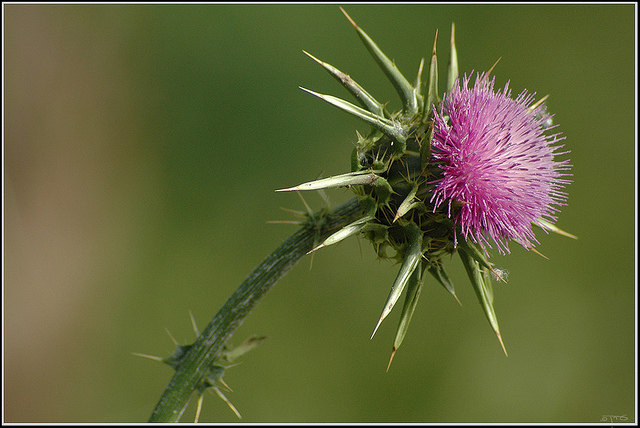 Milk thistle is a flowering plant that belongs to the daisy family. It is native to many areas around the Mediterranean Sea and was brought to North America by European colonists. It gets its name from the milky sap contained within its leaves. The most common species is silybum marianum.
Milk thistle is a flowering plant that belongs to the daisy family. It is native to many areas around the Mediterranean Sea and was brought to North America by European colonists. It gets its name from the milky sap contained within its leaves. The most common species is silybum marianum.
The medicinal extract from the plant is called silymarin and is found in the highest concentrations within the seeds. Milk thistle has been used as an herbal remedy for over 2,000 years. The Greek physician and pharmacologist, Dioscorides, wrote about it in his five-volume encyclopedia on medicine. Pliny the Elder, the Roman author and naturalist, also wrote about the beneficial effects of Milk Thistle on the Liver.
Uses
Liver Disorders.1
Milk thistle has shown clinical efficacy in treating cirrhosis, hepatitis, and fatty liver.2 It protects the liver against hepatotoxins.3 Liver function tests have been improved in hepatitis patients.4 It may limit the amount of liver damage sustained during chemotherapy.5 It helps in the regeneration of liver cells.6 Milk thistle has shown to improve quality of life in hepatitis C patients.7
Cancer
It has shown to reduce cancer cell proliferation and cell cycle progression.8 Milk thistle has also demonstrated beneficial effects in leukemia patients.9
Diabetic Neuropathy
Silymarin may potentially have some use in treating diabetic neuropathy.10
Antioxidant
Silymarin is not only a good antioxidant, but it also increases glutathione levels.11
Bioavailability
Silymarin and silybin absorb poorly from the intestinal tract into the bloodstream. This poor absorption limits its benefits. In an attempt to overcome this problem, silymarin has been chemically attached to different phospholipids. Studies show that when bonded to phosphatidylcholine, its bioavailability is dramatically increased.12, 13 Its bioavailability is also significantly enhanced when put into a microemulsifying delivery system made up of the Surfactant Tween 80, ethyl alcohol, and ethyl linoleate.14
References
- Wellington K, Jarvis B. Silymarin: a review of its clinical properties in the management of hepatic disorders. BioDrugs 2001;15:465–89.
- Luper S. A review of plants used in the treatment of liver disease: part 1. Altern Med Rev, 1998 Dec, 3:6, 410-21.
- Hikino H, Kiso Y, Wagner H, Fiebig M. Antihepatotoxic actions of flavolignans from Silybum marianum fruits. Planta Med 1984; 50:248–50.
- Buzzelli, G; Moscarella, S; Giusti, A; Duchini, A; Marena, C; Lampertico, M. “A pilot study on the liver protective effect of silybin-phosphatidylcholine complex (IdB1016) in chronic active hepatitis.”. International journal of clinical pharmacology, therapy, and toxicology, 1998; 31 (9): 456–60.
- http://www.reuters.com/article/2009/12/14/us-milk-thistle-idUSTRE5BD2XS20091214?feedType=RSS&feedName=healthNews&rpc=22&sp=true
- Pradhan SC, Girish C. Hepatoprotective herbal drug, silymarin from experimental pharmacology to clinical medicine. Indian J Med Res, 2006; 1245(5): 491-504.
- Rambaldi A, Jacobs BP, Gluud C. Milk thistle for alcoholic and/or hepatitis B or C virus liver diseases. Cochrane Database of Systematic Reviews. 2007;(4):CD003620.
- Lah JJ, Cui W, Hu KQ. Effects and mechanisms of silibinin on human hepatoma cell lines. World J Gastroenterol 2007; 13(40): 5299-5305
- www.cancer.gov/cancertopics/pdq/cam/milkthistle/Patient/Page2#Section_9
- Soto C, Pérez J, García V, Uría E, Vadillo M, Raya L”Effect of silymarin on kidneys of rats suffering from alloxan-induced diabetes mellitus.” Phytomedicine. 2010 Dec 1;17(14):1090-4.
photo credit: eran finkle
